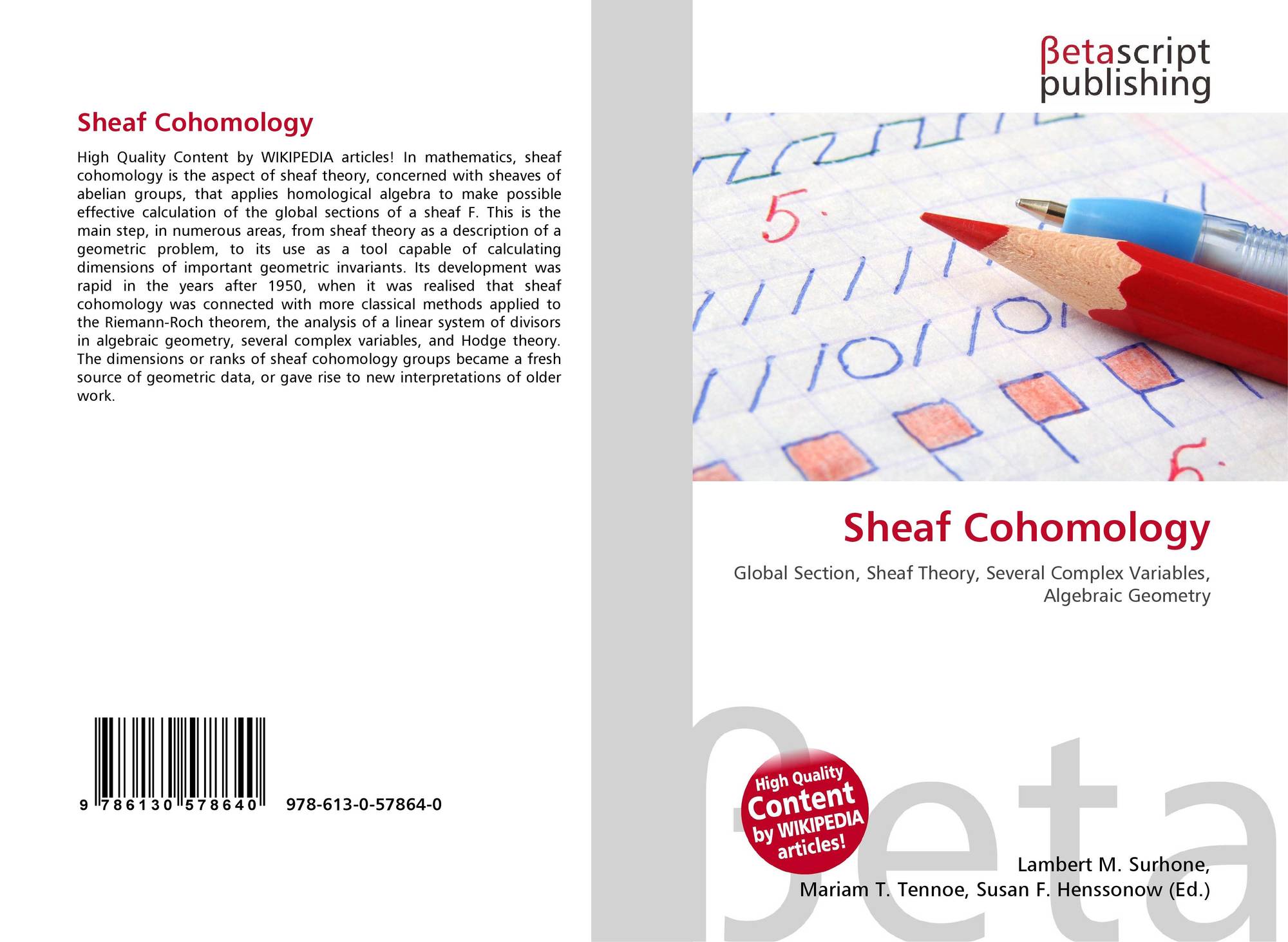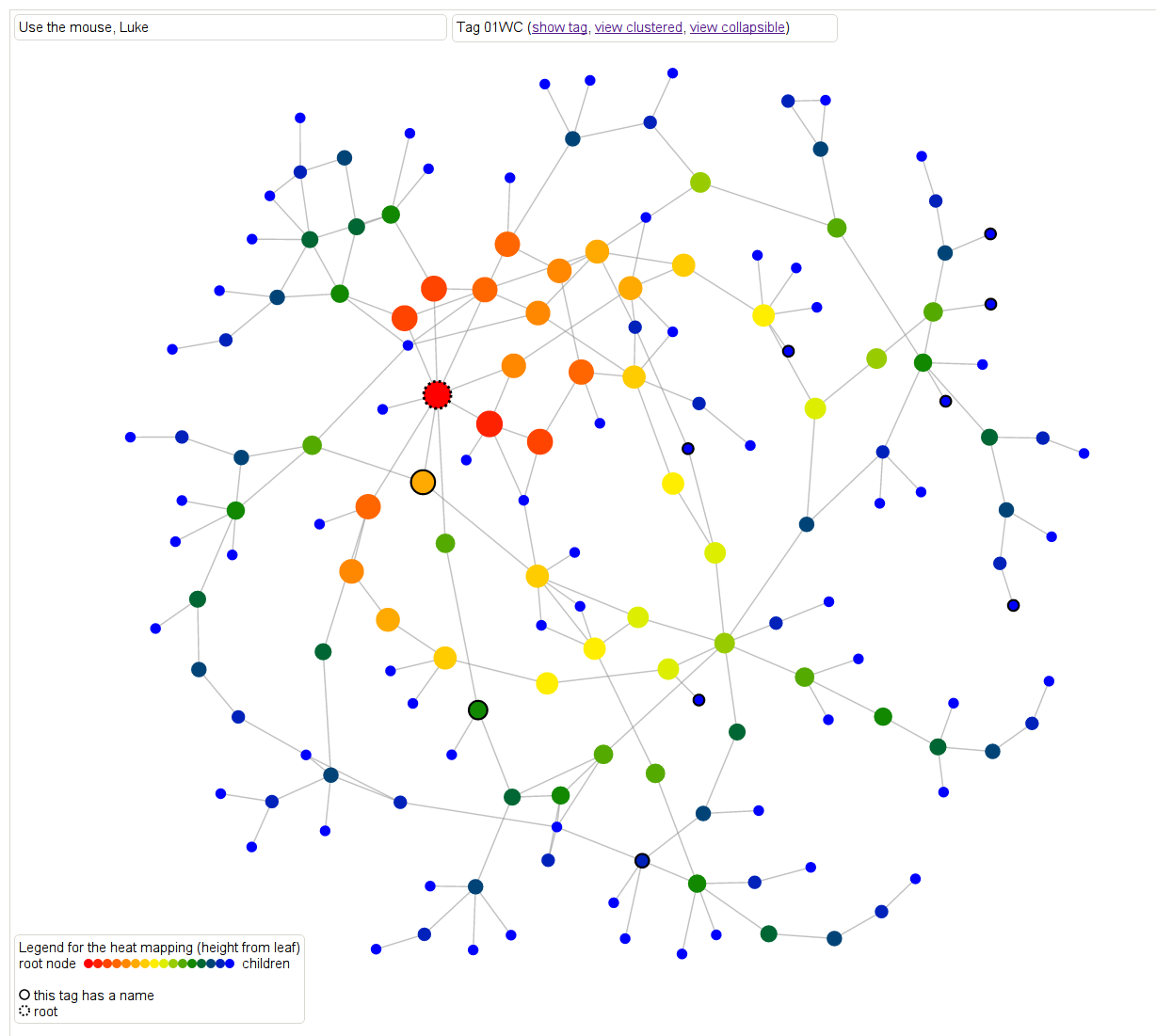Sheaf cohomology
Garbenkohomologie is in mathematics, mainly in algebraic geometry and complex analysis, a technique by which one can study global properties of topological spaces and defined on them sheaves. In the simplest case, the first cohomology group describes the difficulty to obtain a global solution from the local solutions.
- 3.1 The Godement resolution
- 3.2 Cohomology of an overlap
- 3.3 Čech cohomology
- 3.4 Garbenkohomologie as nonderivative functor
- 3.5 Other resolutions
- 3.6 Non- abelian H1
- 7.1 Algebraic Geometry
- 7.2 Complex Analysis
Definition
Specifically, Garbenkohomologie on a topological space, a delta - functor from the category of sheaves of abelian groups to the category of abelian groups. This means: Each sheaf of abelian groups on functorial way a sequence of abelian groups for assigned and for each short exact sequence
Of sheaves of abelian groups there is a natural long exact sequence
In addition, the group of global sections of.
Application Examples
Logarithm of a holomorphic function
Problem: It is a territory and a holomorphic nowhere vanishing function. Wanted is a holomorphic function such that for all.
Locally, such a set always: If selected fixed and small enough, then one can, due to the path independence of the integral
Set, which is selected such that the following holds. If you want the same principle to define global, one needs that
Vanishes for every closed path. Dividing by even, we obtain a homomorphism
Whose vanishing is necessary and sufficient for the existence of a global solution (this is the fundamental group of ).
Expressed in terms of the sheaf implies the local solvability that the homomorphism of sheaves of the sheaf of holomorphic functions (with the addition as a link ) in the sheaf of non-vanishing holomorphic functions is surjective ( with multiplication ). Its core is the sheaf of functions locally constant integer multiples of are so up to the multiplication by the constant sheaf. Together they form the short exact sequence
The given function is now a member of, and wanted a prototype is under in. The Garbenkohomologie provides an exact sequence
So if and only has a holomorphic logarithm, when the image of in vanishes. This image can be identified with the above explained homomorphism.
Existence of functions with predetermined values
Problem: It is given a sequence of complex numbers with no accumulation point and another sequence of arbitrary complex numbers. Then there exists an entire function with for all?
It should be, and the constant sheaf on 'll identify with their direct image. Then the homomorphism, which is given by the evaluation of a function in points, onto. Because in a sufficiently small neighborhood of lie from any other points so that you can select to a predetermined value as the model in the constant function with value. The core of is denoted by, so that we have the short exact sequence
Receive. From Garbenkohomologie gives an exact sequence
It can be shown that disappears, so each element has a preimage in now, ie any distribution of values is realized by an entire function.
Constructions
There are a fixed chosen topological space and a sheaf of abelian groups.
The Godement resolution
Define a sheaf on by
With the projections as limiting illustrations. There is a canonical injective homomorphism which assigns a cut its family of germs. The definition of etale sheaves as rooms explains the term ' sheaf of discontinuous sections " for. Set now
And iteratively
We obtain a resolution
Then Garbenkohomologie is defined as the - th cohomology the complex.
The Godement resolution has the advantage that it is simple to define and requires no elections. For specific calculations but it is usually inappropriate.
Cohomology of an overlap
It is a family of open subsets of such that. Sit for and. This yields a kosimplizialen topological space and by applying a simplicial abelian group that corresponds according to the Dold - Kan correspondence a Kokettenkomplex in non-negative degrees. Its cohomology is the cohomology of with respect to the coverage.
Specifically, the complex is represented by
To the differential
The restriction of sections of designated.
1- cocycle are families with at ( with implicit constraints ). Two 1- cocycle are kohomolog if there is a family with for all.
If an overlap with for all, then the canonical homomorphism is bijective for all. This known as a set of Leray statement is especially true for open affine coverings of separated schemes, when a quasi-coherent module beyond sheaf.
Čech cohomology
If a surplus in the previous section, it is a refinement of a cover along with a picture, so that applies to everyone. Then one obtains homomorphisms for all. In principle, Čech cohomology of the direct limit over these refinements. But for technical reasons we consider overlaps with for all and with refinements for all. Then say
The Čech cohomology of.
There are canonical homomorphisms that are bijective and injective. If a para compact Hausdorff space, they are bijective for all.
Garbenkohomologie as nonderivative functor
It is a sheaf of rings and a module sheaf. ( The case of sheaves of abelian groups is covered by with. ) Then the category of module sheaves has enough injective objects many, so you can make the -derived functor of the functor of global sections. In general, one can calculate the -derived functor via acyclic resolutions, and one can show that withered sheaves are acyclic. ( A sheaf is called withered, if for all open subsets is surjective. ) The Godement resolution consists of wither - module sheaves, so is a nonderivative functor, and it does not matter whether you abelian the -derived functor for module sheaves or sheaves forming groups.
On a diagram, you can restrict the functor on the category of quasi-coherent sheaves module. If quasi compact and separated enough injective has many objects and the calculated on -derived functor is consistent with the calculated on the category of all -modules.
Other resolutions
Other classes of acyclic sheaves, which can thus be used for resolutions that are soft sheaves and fine, especially in the (complex) Analysis sheaves.
Non- abelian H1
Is a sheaf of not necessarily abelian groups (hereinafter written multiplicatively ), you can transfer the cover design, at least for. 1- cocycle for a coverage are families who meet for all. Two cocycle and hot kohomolog, if there is such that for all. To be Kohomolog is an equivalence relation on the 1- Kozykeln, and the amount of the equivalence classes is again designated. It contains an excellent element the class of the trivial Kozykels. In the direct limit we obtain a dotted quantity.
There are nonabelian case under various conditions still exact sequences, generalizing the long exact sequence of abelian sheaves. There is also a non-abelian sheaves for. See Giraud.
Comparison with singular cohomology
If a topological space and an abelian group, one can on the one hand are the singular cohomology, on the other hand Garbenkohomologie the constant sheaf. The condition that a CW complex is is sufficient that one obtains canonically isomorphic groups, but also satisfy weaker conditions.
H1 and Torsore
Is a ringed space, that is, a topological space together with a sheaf of rings, then there is a canonical bijection between the set of isomorphism classes and of line bundles.
This statement allows a far-reaching generalization: For any sheaf of groups, there is a canonical bijection between the set of isomorphism classes and by - Torsoren. The reference to line bundles created as follows: If an object is on, then there is a correspondence between locally isomorphic to objects and Torsoren. The correspondence assigns an object to the Torsor.
A Torsor for a sheaf of (not necessarily abelian ) groups on a space is a sheaf of sets on together with a - ( left ) operation so that an open cover of exist, which is trivial. Detail this means: Given a Garbenmorphismus that for every open subset of an operation on induced. For each will now be as sheaf with surgery isomorphic with the left translation as an operation. A Torsor exactly is then trivial, that is, globally isomorphic to the left translation, if not empty.
Is a system of trivializations, obtained by a 1- cocycle, vice versa, one can use cocycle to adhere trivial Torsore.
In logarithm, the logarithm form of one - Torsor: For each log on a subset and each integer is also a logarithm, and if it is connected, it can also be no other. The class in this Torsors is exactly then trivial if it exists a global logarithm.
Higher direct images
Is a continuous map and a sheaf of abelian groups, then the direct image is a left exact functor, and one can form the functor -derived. He is the Vergarbung the presheaf.
The cohomology of the cohomology and of hanging over the Leray spectral sequence together with each other: there is a spectral sequence with that converges to.
Important theorems on Garbenkohomologie
Algebraic Geometry
- If a quasi-coherent module sheaf on an affine scheme, then for all.
- If a scheme whose underlying space is noetherian and has dimension, then is abelian groups and for any sheaf.
- Coherence theorem of Grothendieck: Is actually over a Noetherian ring and a coherent sheaf module, then is a finitely generated module for each.
- Vanishing of Serre: For a coherent sheaf on a projective scheme is for and.
- Serre duality
- Semi-continuity set of Hans Grauert
- Serres GAGA and Grothendieck GFGA
Complex Analysis
- Theorem B by Henri Cartan: For coherent sheaves on Einstein's spaces, the higher cohomology vanishes
- Finiteness theorem of Cartan -Serre: cohomology of coherent sheaves on compact complex spaces are finite-dimensional ( as a vector space ), generalized coherence in the set of Grauert
- Semicontinuity theorem of Grauert
- Hodge theory










